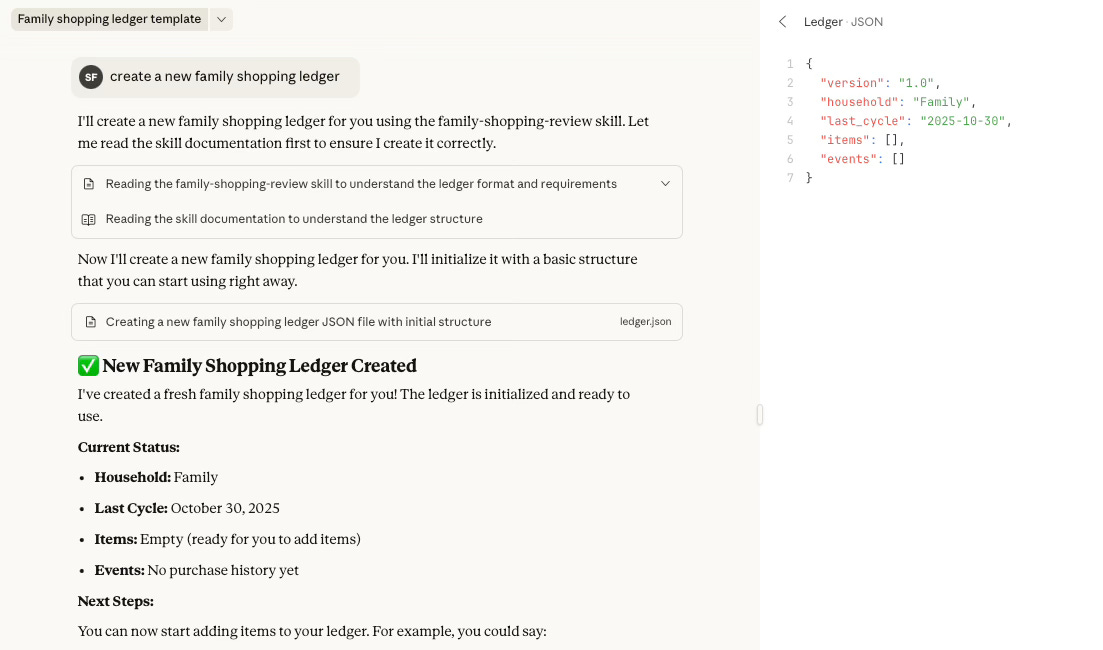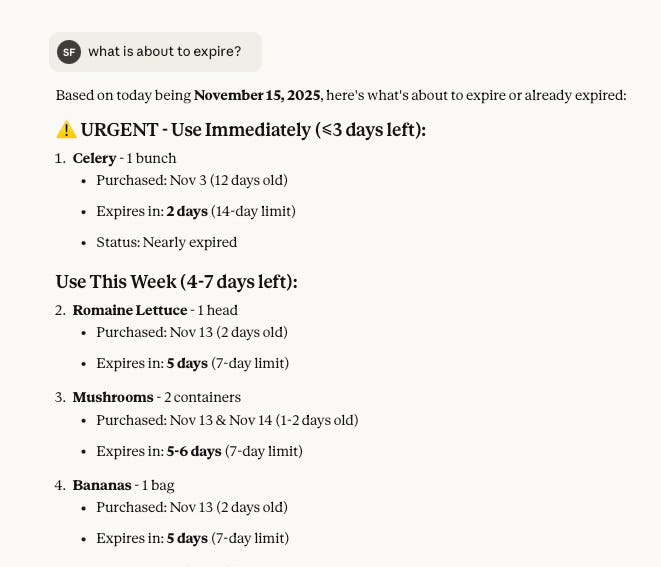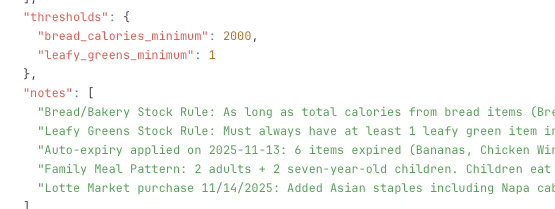Most people think AI will change software. The truth is far more unnerving: AI will eat software. No apps, no toolbars, no menus—just language that directly shapes your digital world. And this shift will terrify users before it liberates them. Yet we are here to learn, and once you finally “get it,” an entirely new world opens—a world where intention becomes action, and where the boundary between thought and system begins to dissolve.
Users Will Be Terrified If Their Software Has No Toolbars or Buttons
When we talk about AI-Native software paradigms, we have to start with an uncomfortable truth: users have never been trained to use language as an interface. Their entire digital upbringing was shaped by software like Microsoft Word—file menus, toolbars, ribbons, dropdowns, nested icons, and carefully structured workflows. I still remember in the 90s watching my parents attend after-work training courses just to figure out how to use these tools. For thirty years, people have been conditioned into a very specific cognitive model of software: apps as containers, each app its own self-contained universe, each universe filled with visual cues that tell them what they can and cannot do. The GUI didn’t just define how software worked—it defined how users believed thinking with software should work. Their intuition has been sculpted by buttons.
So when you suddenly place a pure language interface in front of them—a blank, silent surface with no toolbar, no icons, no modes, no menus—most users feel an instinctive discomfort. It contradicts everything they were taught about how to “operate” a computer. And here lies the paradox of AI-Native systems: language is humanity’s most natural interface, yet inside software it has become the most alien one. Instead of feeling intuitive, it feels empty, fragile, and strangely untrustworthy. Users must, in a sense, be retrained to let language reclaim its place as the interface.
But “language as interface” is only the surface. Underneath it lies a deeper architecture: Language → Structure → Scheduling. Language is not chatting; it is executable intent. Structure is not code; it is a schedulable cognitive unit. And scheduling is not an operating system; it is the living mechanism through which the system acts and adapts. The user speaks, the system extracts structure, and the scheduler executes it—not as a single command, but as part of an unfolding, living process. This is the engine of AI-Native software.
This is also why the shift feels so radical. We are asking users to cross a major paradigm boundary: from clicking buttons to expressing intention; from switching between apps to letting structures coordinate invisibly in the background; from learning the logic of computers to allowing computers to learn the logic of their minds. This is not a new user interface. It is a cognitive transition. Users must unlearn thirty years of GUI-centric conditioning and rediscover their original human interface: language.
Which brings us to the real shock of the AI-Native era: the bottleneck is not the technology—the bottleneck is the user’s mental migration speed. AI-Native systems become simple once the new intuition forms, but forming that intuition requires a shift from operating to declaring, from manipulating to structuring, from doing to directing, from procedural action to intentional expression. Most people have never encountered a world with no apps, no modes, no toolbars, no fixed workflows, and no visible architecture at all—only language → structure → scheduling quietly reshaping their digital environment in the background.
The disorientation does not come from AI being too advanced. It comes from the interface being suddenly, almost shockingly, too human.
Let’s continue with the Claude Skill I shared with you about 2 weeks ago. In an AI-Native system, you don’t manually build databases or configure software. You use intention itself to create the ledger—a database-like file that you fully own. You simply say: “Create a household shopping ledger for me,” and the system generates the entire structure automatically. This small act reveals something fundamental about the future.
Lesson 5: Build a Smart Shopping App with Just One Claude Skill
“Build an App with Just One Claude Skill and One .json File — No Code, Just Structure.” —Susan STEM
🌱 Why non-programmers are the real beneficiaries of the AI-Native era
In the AI-Native paradigm, you are no longer the one learning how to program; the system is learning your structure. What you need to master is not code, but the ability to express your world in a structured way. In the past, you had to learn, “How do I use this app?” In the future, you will only need to say, “Here is how my world works.” You shift from being a button-clicking operator to becoming a designer of intention—someone who describes, not someone who complies.
For instance, I could instruct the system: “Make sure I always have some leafy greens on hand”. And this would show up in my ledger.
🧬 Information stops being “records” and becomes “structure”
Every sentence you give to the Shopping Skill is not just input; it is training your household model. Traditional bookkeeping is a static record: “Two bottles of milk, $3.99.” AI-Native bookkeeping is structural: “This is our family’s replenishment rhythm; this is our inventory logic; this is our waste pattern; this is our budgeting structure.” Every time you say, “Add what I just bought,” or “What did we buy this week?”, or “Change the oat milk par to 3,” or “What’s about to expire?”, the system is not memorizing what you have—it is learning how your household operates.
The more you use it, the more the system becomes like you. Eventually, it becomes something only you can use—an extension of your habits, your decisions, your rhythms. A system that exists nowhere else in the world except as the structural reflection of your life.
The Five Foundational Principles of AI-Native Systems
(We’ll use the family-shopping Skill as the running example.)
The first principle is simple but transformative: your language is the interface. You no longer learn buttons, search through menus, or memorize workflows. You simply speak, and the system interprets your meaning, locates the correct structural position, updates the ledger.json file, runs the appropriate scheduling logic, and returns a conclusion. Language replaces interface; intention replaces operation. You might say, for example, “We’re almost out of soy sauce; I plan to buy more next Wednesday,” and the system will convert that into structure without you touching a single button.
The second principle is that all of your data lives inside a file you can read—ledger.json. In an AI-Native world, the core is not an app but a file that you own completely. It is transparent, exportable, copyable, portable. Structure DNA v1.0defines this explicitly: the ledger is the user’s “single source of truth,” never something a platform can lock away. The AI merely updates the file; it does not own it. This is critical: every interaction generates an actual file that you keep, version, and upload yourself. Every word inside is readable by both humans and machines—because that is the design.
The third principle is that everything is editable, reversible, and rebuildable. You can never “break” the system. You can always undo the last change, revise an entry, run a new review, or even start a fresh ledger from today. An AI-Native system is a language-reflexive system: as long as you operate inside the dialogue box and follow the guidance of the baseline file, your natural language will not lead the system astray. The structure always catches you.
The fourth principle is that the system becomes more accurate over time, but what it learns is structure, not privacy.It does not memorize what you buy or eat; it learns how you express “low stock,” how you define “waste,” the rhythm of your household replenishment, and the logic by which your home operates. It is not learning your secrets—it is learning your structural patterns. Everything is recorded in the ledger, visible to you at all times, forming the safety baseline for AI-Native systems. (remember I am running out of soy sauce?)
The fifth principle is that the more you speak, the simpler life becomes. This is not a feature-stacked app; it is an evolving structural system. Every sentence clarifies your preferences, enriches the structure, and sharpens the scheduler’s accuracy. Eventually you notice that household decisions require less thought, waste naturally disappears, restocking is always just right, and the system begins to understand the pace of your home better than you do. This is the “life scheduler” of structural civilization: your problems, your routines, your rules, your habits—all the subtle, deeply personal patterns that conventional software could never encode—can now be expressed through natural language and automatically arranged by the system.
Conclusion
The Shopping Skill is only the beginning; the five principles are what ordinary users truly need to grasp to understand AI-Native systems. The Shopping Skill is a small beam of light—it opens the door to the idea that non-programmers can build real systems. But these principles define the literacy that everyone will eventually need in the AI-Native era.
In one sentence:
Express your true intentions in natural language, let AI handle the structuring, scheduling, and optimization—and you retain full ownership of your data forever.
大多数人以为 AI 会改变软件。真实情况是:AI 会直接把很多软件吃掉。
没有 App,没有工具栏,没有菜单——只剩下你的语言,直接改写你的数字世界。
这个转变会让用户先害怕,再解放自己。但我们既然已经走到了这里,就要继续学习。一旦你真正理解了它,你会进入一个全新的世界——在那里,意图会直接变成行动,“想法”和“系统”之间的边界开始消失。
当软件没有工具栏和按钮时,用户为什么会害怕?
在讨论 AI-Native 软件范式 之前,我们必须先承认一个现实:
用户从来没有被训练成使用“语言”作为系统界面。
他们的数字化经验来自 Microsoft Word 这样的软件——
文件菜单、工具栏、功能区、下拉菜单、图标、工作流……
整个学习过程是靠“看到按钮 → 学习点击方式 → 记住功能”。
90 年代,我的父母下班后还要参加电脑培训班,就是为了弄明白这些按钮到底怎么用。
三十年来,用户已经被固定在一种心智模型里:
App 是一个个封闭容器,每个 App 是一个独立的小世界,每个小世界都有自己的逻辑和界面提示。
GUI 不只是定义了软件的用法,更定义了“软件思维方式”本身。
用户的直觉,是被这些按钮和图标塑造的。
所以,当你突然把一个 纯语言界面 放到他们面前
没有工具栏,没有图标,没有模式,没有菜单
用户的第一反应一定是不适。
因为这违背了他们被训练了几十年的操作方式。
这就是 AI-Native 的悖论:
语言是人类最自然的界面,但在软件里,它反而成了最陌生的界面。
用户需要被重新训练,让语言重新成为界面。
“语言界面”只是表层,底层结构完全不同
AI-Native 的真正底层结构是:
语言 → 结构 → 调度
语言不是“聊天”,而是可执行的意图;
结构不是代码,而是可以调度的认知单元;
调度不是操作系统,而是系统运行的生命机制。
用户说一句话,系统会从中提取结构,然后调度器去执行。
这不是一次“执行指令”,而是一个持续展开的过程。
这就是 AI-Native 软件的核心。
为什么用户会觉得难以适应?
因为这是一场真正的范式迁移:
从“点击按钮”到“表达意图”;
从“切换 App”到“让结构在后台自动调度”;
从“学习计算机逻辑”到“让计算机学习你的逻辑”。
这已经不是界面变化,而是认知方式的转变。
用户必须卸下 30 年来 GUI 训练出的习惯,把语言重新当成主体。
AI-Native 时代最大的挑战不是技术,而是用户心智迁移的速度。
只有当用户形成新的直觉,这个系统才会变得简单。
从一个 Shopping Skill 说起
继续说我一周前分享给你的那份 Claude Skill。
在 AI-Native 系统中,你不需要建数据库,也不需要设置软件结构。
你只需要一个意图:
“帮我创建一个家庭购物账本。”
系统就会自动生成整个 ledger。
这件“小事”展示了未来世界最核心的变化:
不是你学习系统,而是系统学习你的结构。
🌱 非程序员为什么是最大受益者?
AI-Native 世界里,不需要你学编程。
你需要掌握的,是如何用结构化的语言描述你的世界。
过去,你要学:“这个 App 要怎么用?”
未来,只要告诉系统:“我的世界是这样运作的。”
角色发生根本变化:
你从“操作按钮的人”,变成“描述系统逻辑的人”。
例如,你说一句话:
“记住,我家里要常备绿叶蔬菜。”
这就会直接写入 ledger,成为结构的一部分。
🧬 信息不再是“记录”,而是“结构”
你对 Shopping Skill 说的每一句话,都在训练你的家庭模型。
传统记账:
“牛奶两瓶,3.99 美元。”
AI-Native 记账:
“这是我们家的补货节奏,这是库存逻辑,这是浪费模式,这是预算结构。”
系统记住的不是
“你买了什么”,
而是
“你家是如何运作的”。
用得越多,系统越像你。
最后,它会变成一个全世界只有你能用的系统。
你的习惯、节奏、偏好、逻辑的自然延伸。
AI-Native 系统的五条基础原则
第一条:语言就是界面。
你说话,系统理解语义→定位结构→更新 ledger→执行调度→给出结果。
意图替代操作。
第二条:所有数据都在一个你能看懂的文件里:ledger.json (现在我们先用这个模式来打个比方,的确有不方便的地方我们以后再说)。
这是系统的核心,而不是 App。
你完全拥有它。AI 只负责修改,不拥有数据。
第三条:一切可修改、可撤销、可重建。
你永远不会“弄坏系统”。
自然语言在结构的保护下总是安全的。
第四条:系统学习的是结构,不是隐私。
它不记你吃了什么,只记你如何表达“库存不足”“需要补货”。
第五条:越用越简单,越用越聪明。
你的语言会不断强化系统结构,最终系统比你更懂你家的节奏。
结语
Shopping Skill 只是一个入口。
真正重要的是——这五条原则,构成了 AI-Native 时代每个人都必须掌握的素养。
一句话总结:
用自然语言表达你的意图,让 AI 完成结构化与调度,而数据永远属于你。









